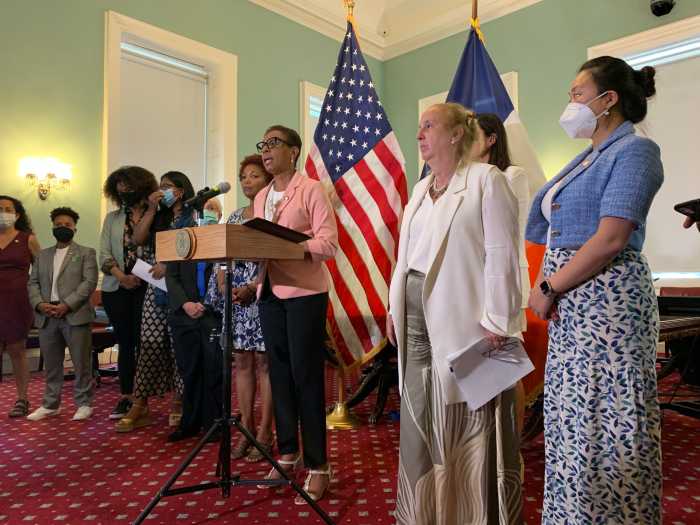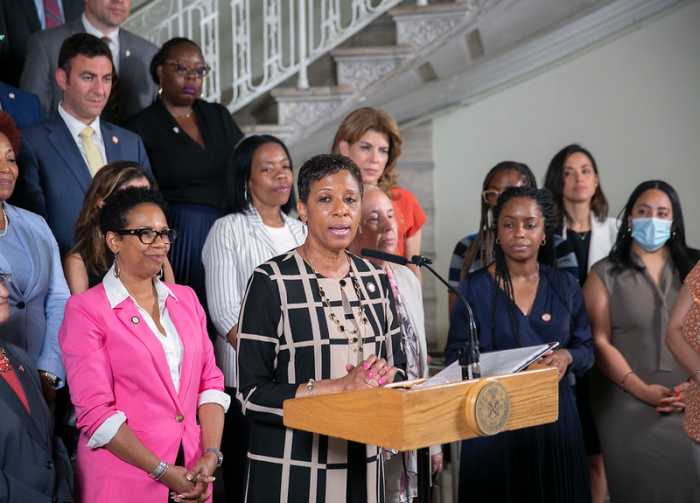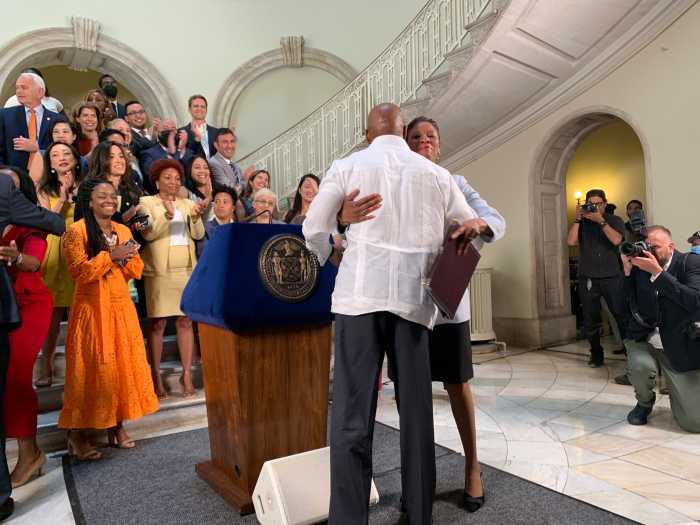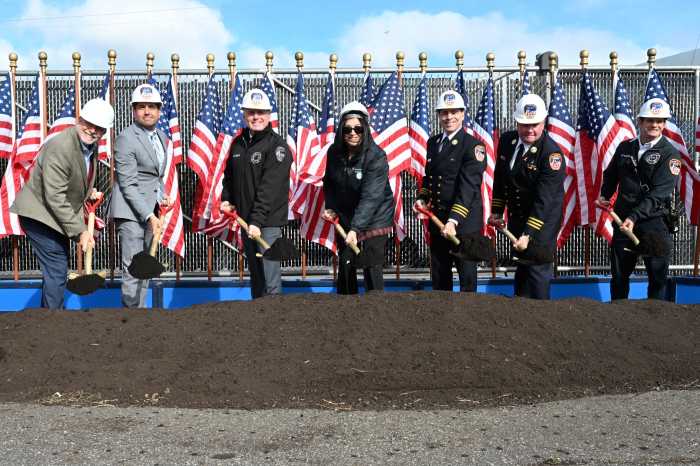Officials from Mayor Eric Adams’ administration faced tough questions Tuesday on their handling of an influx of migrants into the city’s homeless shelters from the City Council Committee on General Welfare during an oversight hearing.
The hearing was called by City Council Speaker Adrienne Adams and Deputy City Council Speaker Diana Ayala (D-Manhattan, Bronx) – who also chairs the general welfare committee – in response to a “surge” in Central and South American immigrants being bussed to the city. Mayor Adams says those migrants, who are being sent here by southern states like Texas and Arizona and the federal government, are overwhelming the city’s homeless shelter system, which is legally required to house them under its “right to shelter” policy.
The hearing was sparked by reports that the city Department of Social Services (DSS) – which oversees the city’s shelters – left several migrant families seeking shelter to sleep on the floor of the shelter system intake facility in the Bronx – known as the Prevention Assistance and Temporary Housing (PATH).
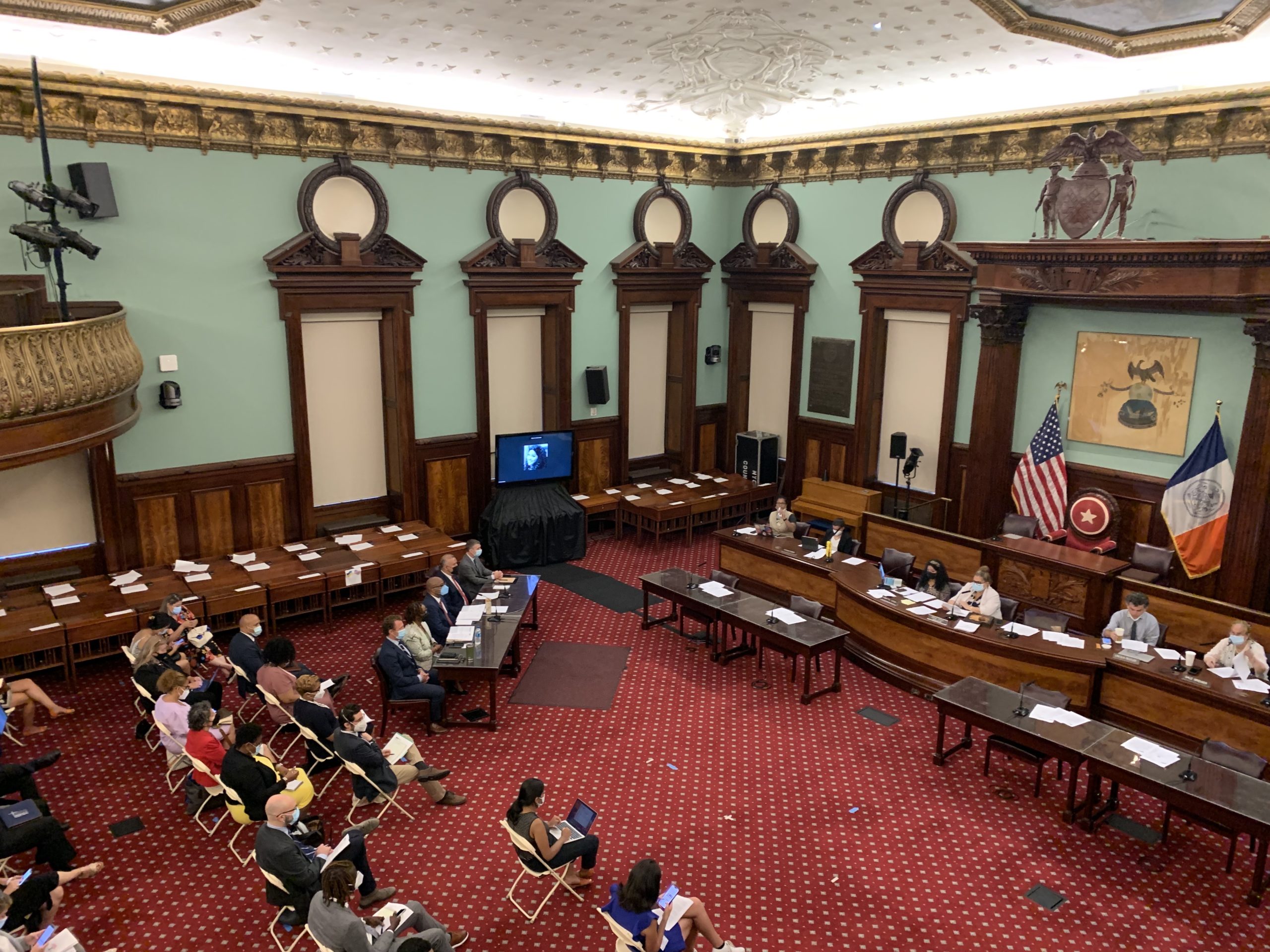
DSS Commissioner Gary Jenkins and Mayor’s Office of Immigrant Affairs Commissioner Manuel Castro testified on behalf of the Adams administration.
During one of the hearing’s more heated exchanges, while questioning Jenkins, City Council Member Lincoln Restler (D-Brooklyn) said he’s skeptical that the recent uptick in the city’s shelter is being caused by the increased number of asylum seekers in need of shelter. Instead, Restler added, he believes the system is overwhelmed – particularly for families with children – due to the end of the state’s eviction moratorium in the spring and an increase in the city shelters that normally occurs during the summer months.
“I have to say, it remains unclear to me whether the increase in the shelter census is being driven by the asylum seekers or whether the increase in the shelter census is being attributed to some people needing assistance who are coming from abroad,” Restler said. “And I really hope that we can get clearer data to understand what’s happening. My strong suspicion is that we’re experiencing an increase in the daily children census as a result of the eviction moratorium ending and the regular spike that we see in the summer months.”
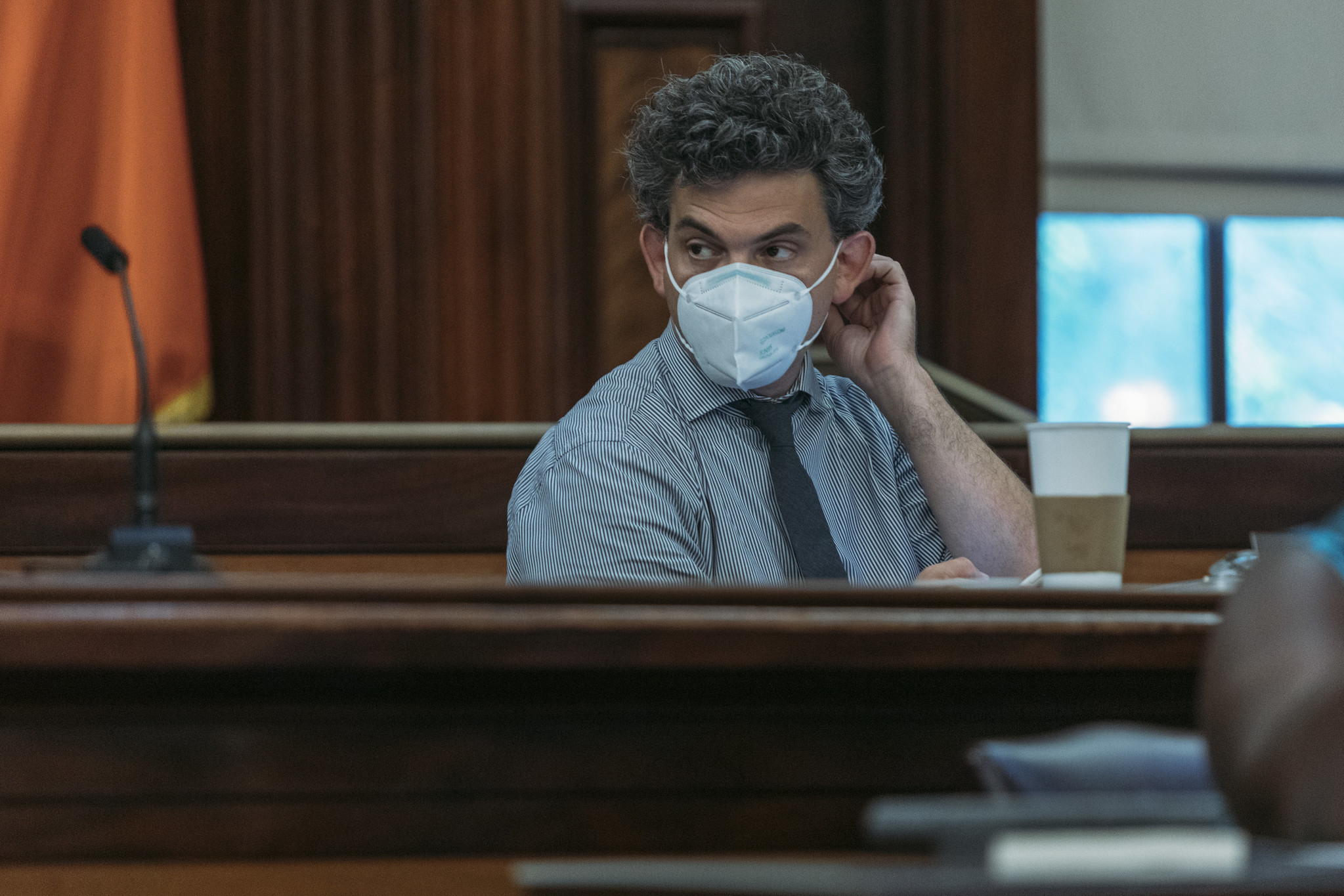
Since May, over 4,000 asylum seekers have “presented themselves” to the shelter and there are roughly 100 people seeking refuge at the city shelters per day, Jenkins said. That has been the driver of the approximately 10 percent increase in the city’s shelter population since April, he added.
However, when Restler asked Jenkins for a specific number of migrants currently in the shelter system, he couldn’t give an exact answer.
“We have 4000 individuals that presented themselves that we identified as asylum seekers,” Jenkins said. “What’s currently here today and is still in our system? I’ll have to get back to you on that data.”
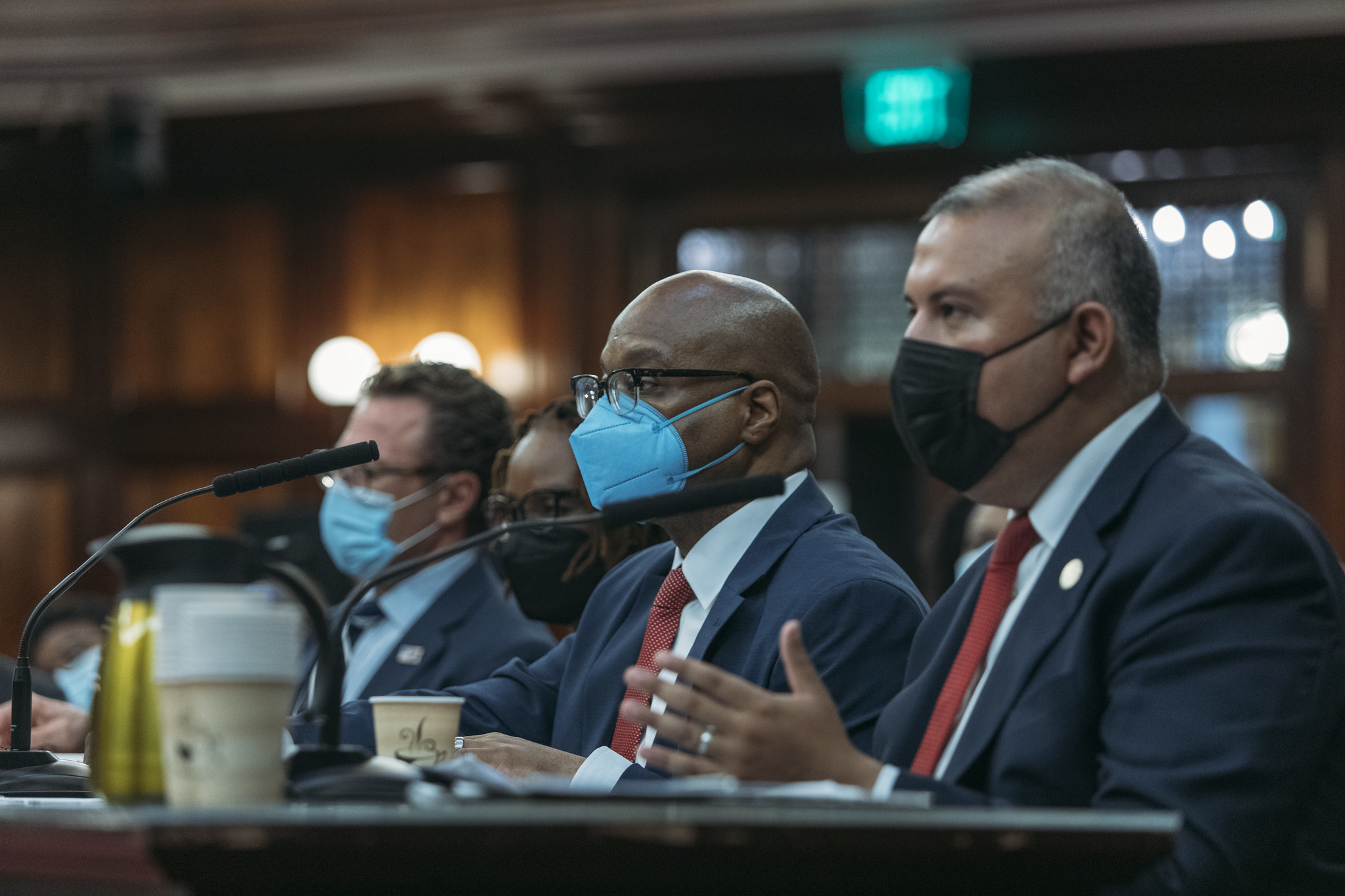
But Restler was hardly the only council member not buying the idea that the swelling shelter population should be blamed squarely on the recent rise in immigrants. Speaker Adams released a statement during the hearing that accused the mayor of “scapegoating” migrants for pre-existing issues in the shelter system.
“While there may be a rise in asylum seekers in New York City, this does not mean they are to blame for issues that have historically plagued our system,” Speaker Adams said. “The economic impact of COVID-19, the ending of the eviction moratorium and voucher discrimination in the rental market all increase demand on the City’s shelter system, and increased efforts are needed.”
But at an unrelated press conference following the hearing, the mayor pushed back on the speaker’s criticism, saying he’s not scapegoating the asylum seekers, but the end of the eviction moratorium can’t be responsible for the surging shelter population because only 1 percent of the increase can be attributed to evictions.
“I’m not quite sure what the speaker is saying,” the mayor said. “I’ll reach out to her and I’m gonna ask her to come with me to some of the homeless shelters that I’m visiting, and I’ll continue to visit with my team, and she can sort of point out what she believes we’re scapegoating. From my understanding, she said that the eviction issue is causing some of the homelessness. Only 1 percent of those who are in the shelters are there due to evictions.”
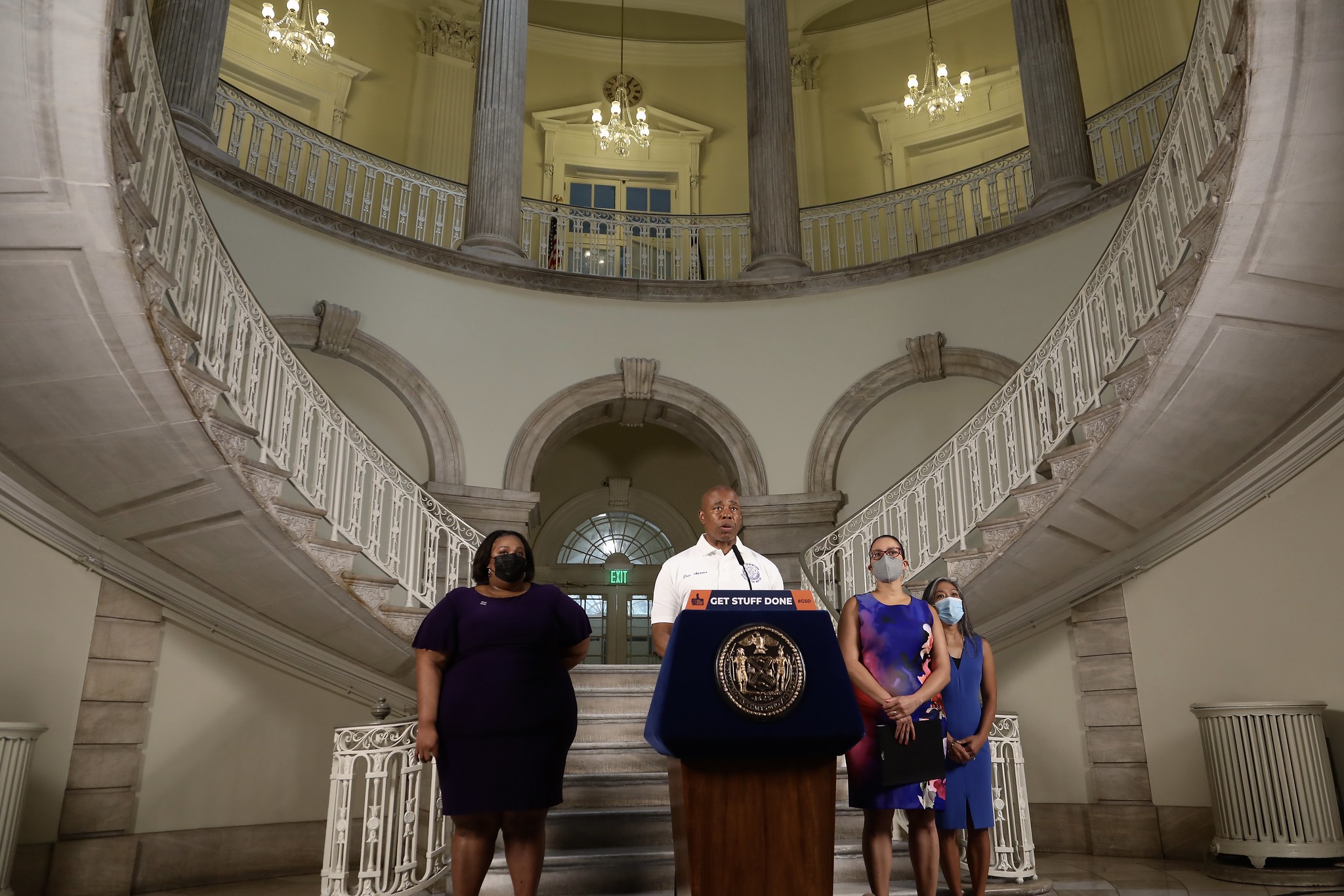
Mayor Adams first began raising alarm bells about the surging shelter population and blaming it on an increase in migrants late last month. On July 19, Adams penned a letter to the White House requesting additional resources from the federal government to help handle the influx.
That same week, the mayor held a rushed press conference to address reporting that his administration violated the city’s right to shelter policy when it failed to place four families to the system by 10 p.m. on July 17, forcing them to sleep overnight in the Bronx intake facility. The administration owned up to failing to find shelter for those families, but insisted they were all placed in shelters by 11 a.m. the next morning.
At a news conference held by the Coalition for the Homeless and the Legal Aid Society before the hearing, City Council Member Shahana Hanif (D-Brooklyn) slammed the Adams administration for allowing those families to sleep overnight in the PATH facility.
“Our city needs to offer sanctuary and shelter to anyone who needs it,” Hanif said. “This means that our city must ensure that beds and critical services are immediately available to meet the demand. It is unconscionable that families have been forced to sleep on the floor of DHS intake rooms while they wait for shelters. We have thousands of empty apartments and hotel rooms in this city. There is housing and just not the will to house those that are without one.”
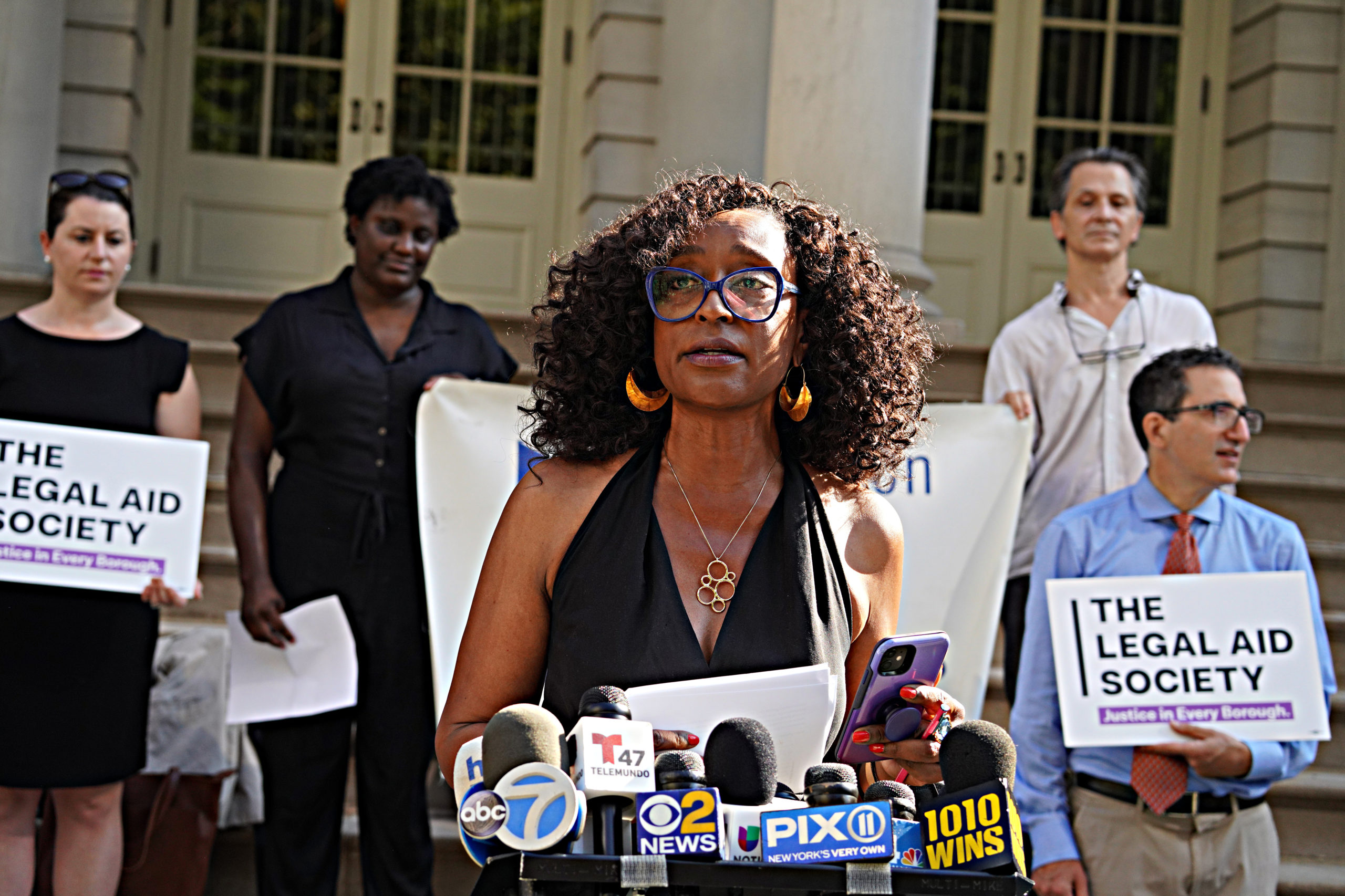
During the hearing, Jenkins insisted that no family has slept more than one night in the intake facility.
Jenkins and Castro also highlighted steps the city is taking to reduce pressure on the shelter system by accommodating the influx of migrants. These include using 11 hotels as emergency shelters and opening a new intake and service center dedicated to asylum seekers in midtown Manhattan.
According to reporting from the New York Post, the city put out a request for proposals (RFP) last Thursday, seeking a non-profit to run the facility with space for 600 households that will provide some core services. City Emergency Management Commissioner Zachary Iscol said the facility should be up and running in the next few weeks “but hopefully sooner.”
“We’re looking at opening up one service center,” Iscol said. “That service center will provide some core services, primarily legal services, along with Department of Education (DOE) facilities. We’re then going to be primarily referring people to community-based organizations for services in their communities. We believe that’s the best model because that helps them matriculate into their communities.”



